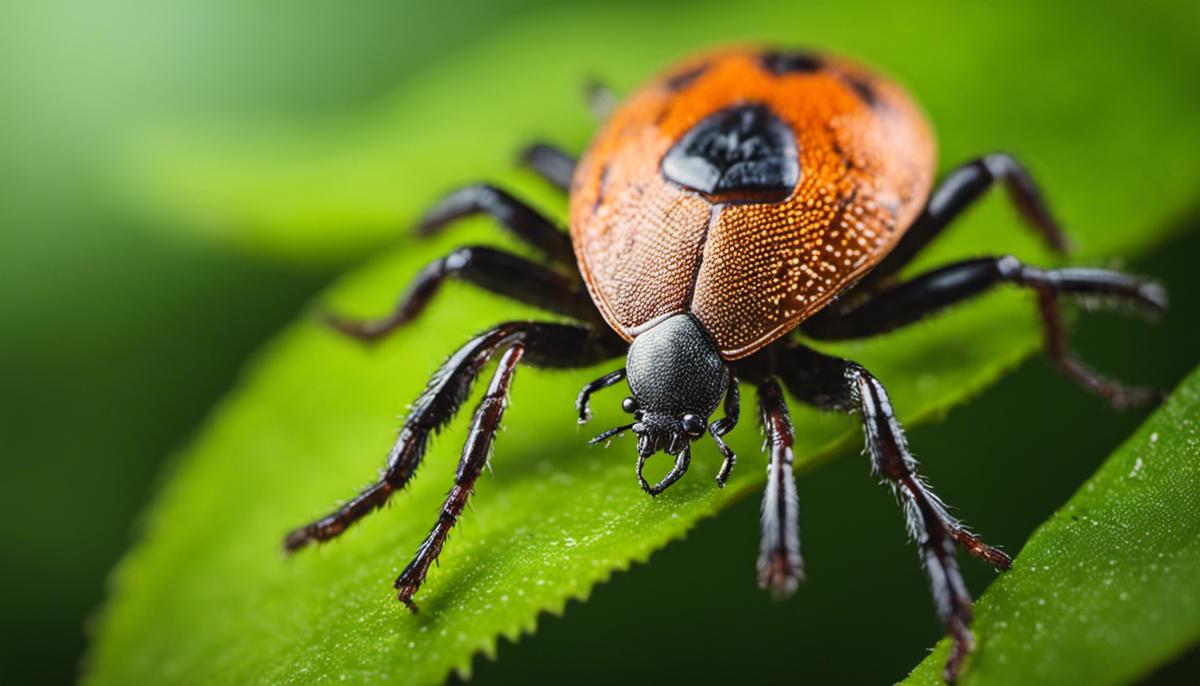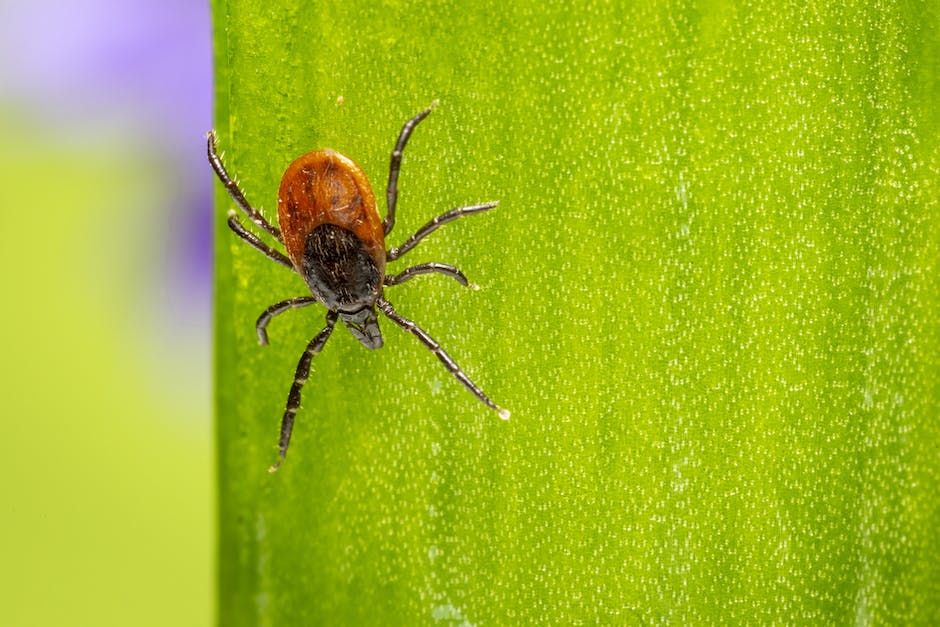In the world where the fascination for biodiversity appears to be limitless, there lies a minute, often overlooked, yet significantly impactful creature – the tick. These small arthropods, while carrying out their own ecological role, may also pose serious health risks to humans and animals alike due to their potential to transmit harmful diseases. This discourse aims at unraveling some of the intricate details about ticks, ranging from their general properties to their various species, the diseases they may carry, and lastly, steps one can take to mitigate their risks.
Basic Tick Knowledge
What Are Ticks?
Ticks are tiny, external parasites which feed on the blood of mammals, birds, reptiles, and amphibians. Spread globally, they are particularly plentiful in areas with warmer climates. Although they might be small, ticks are well-known for transmitting a wide array of diseases including Lyme disease, Tick-Borne Encephalitis, and Rocky Mountain spotted fever.
General Characteristics of Ticks
Ticks are categorized as arachnids, due to their eight legs, sharing this category with spiders and mites. They have a hard-shelled body divided into two primary sections: the anterior capitulum (which houses the mouth and feeding tubes) and the posterior idiosoma (where their legs and reproductive organs are located). Unlike many insects, ticks are incapable of jumping or flying, but instead rely on crawling onto their hosts to feed.
Life Cycle of Ticks
Ticks go through a four-stage life cycle: egg, larva, nymph, and adult. After hatching, a tick must feed on blood at each stage before it can progress to the next. Generally, this life cycle can range from 2 months to 2 years based on the species and environmental conditions.
Most Common Types of Ticks
Among the numerous species around the world, the most common types of ticks in the United States are the Blacklegged Tick (also known as the Deer Tick), the Lone Star Tick, and the American Dog Tick.
The Blacklegged Tick is notorious for spreading Lyme disease. They are found particularly in the Northeast and Upper Midwest parts of the United States.
Lone Star Ticks are easily identifiable by the single white dot (or ‘star’) on the females’ back. These ticks are widely distributed across the Eastern, Southeastern, and Midwestern U.S. They can transmit diseases like Ehrlichiosis and Southern Tick-Associated Rash illness (STARI).
Lastly, the American Dog Tick is distributed widely across the East Coast and is present in some parts of the West Coast of the United States. It is known for transmitting diseases like Tularemia and Rocky Mountain spotted fever.
The Role of Ticks in Our Ecosystem
Ticks, despite their rather unsavoury reputation, are a crucial component of our ecosystem. They function as a key food source for a variety of animals and assist in maintaining balance within wildlife populations. Ticks can also carry infectious diseases, which, while harmful, help control overpopulation within wildlife groups, therefore preserving ecological balance. As such, they serve as indicators of an ecosystem’s health status. It’s important to understand their presence is not entirely negative, but rather necessary in maintaining equilibrium within our environment.

Types of Ticks
The American Dog Tick: A Common Presence
One of the most common species is the American Dog Tick, known in the scientific community as Dermacentor variabilis. This tick is native to various parts of North America, including regions from the East Coast to the Midwest, all the way to the Pacific Coast. It thrives in grassy places with low-lying vegetation, frequented by mammals. Though this species of tick feeds on various hosts, it shows a particular fondness for domestic dogs and medium-sized mammals. Humans and their pets may also fall prey to these ticks, which are often carriers of Rocky Mountain spotted fever and tularemia. They become most active during the warmer months, spanning from April to September.
Blacklegged Tick or Deer Tick
Ixodes scapularis is commonly referred to as the black-legged tick or the deer tick. This tick species is primarily found in the northeastern and upper midwestern areas of the United States. These ticks are usually found in wooded, shaded areas with high humidity, and their primary hosts are deer. However, they can also feed on mammals, birds, and even humans. They are responsible for transmitting Lyme disease, anaplasmosis, and babesiosis among other diseases. The adult ticks are most active during the fall, while the nymphs are active during the spring and summer seasons.
Lone Star Tick
The Lone Star Tick, or Amblyomma americanum, is largely found in the southeastern United States, extending into the Midwest and northeastern regions. Lone Star ticks inhabit wooded areas with dense underbrush and animal hosts. They are known to be aggressive human-biters. Their most common hosts apart from humans are white-tailed deer and wild turkeys. These ticks pose a risk to human health as they can transmit diseases such as ehrlichiosis and tularemia. The adults are most active during early spring through late fall.
Brown Dog Tick
The Brown Dog tick, also known as Rhipicephalus sanguineus, is prevalent all over the United States, though it thrives in warmer climates. As its name implies, this tick is particularly fond of dogs, and has been known to infest homes and dog kennels. While the Brown Dog tick is less likely to bite humans, it can transmit diseases like Rocky Mountain spotted fever and babesiosis to dogs. It can be active year-round in warmer indoor environments, while in colder climates, most activity can be seen from late spring through early fall.
Various species of ticks exist, each with distinct characteristics, and their effects on human health differ. Having a fundamental understanding of their behaviors and physical features is integral to preventing tick-borne illnesses.

Tick-Borne Diseases
Understanding Common Ticks and Their Potential Health Risks
In the United States, several prevalent tick species, like the Blacklegged Tick (commonly known as the Deer Tick), Lone Star Tick, American Dog Tick, and the Brown Dog Tick, could inflict harm on humans and animals.
Blacklegged Tick (Deer Tick)
The Blacklegged Tick, also known as the Deer Tick, is primarily found in the northeastern and upper midwestern parts of the U.S. This tick is the vector for Lyme disease, which can lead to serious health problems if left untreated. Symptoms of Lyme disease include fever, fatigue, headache, muscle and joint aches, as well as swollen lymph nodes.
Lone Star Tick
The Lone Star Tick is mainly found in the eastern, southeastern and midwestern states of the U.S. and is known for its single white spot on its back. This tick can transmit diseases like ehrlichiosis which causes fever, headache, fatigue, and muscle aches, and Southern tick-associated rash illness (STARI) which causes a rash, fatigue, headache, fever, and muscle pains.
American Dog Tick
The American Dog Tick is widespread across the eastern U.S. and can carry Rocky Mountain spotted fever and tularemia. Rocky Mountain spotted fever can cause fever, rash, headache and nausea while tularemia can cause several forms of disease, including ulceroglandular disease which causes an ulcer at the site of the tick bite, and glandular tularemia, which does not produce ulcers but does cause enlarged lymph glands.
Brown Dog Tick
Lastly, the Brown Dog Tick found worldwide is less harmful to humans but can transmit diseases to dogs such as canine ehrlichiosis and babesiosis.
Tick Paralysis
Tick Paralysis is a condition that’s caused by neurotoxins produced in the salivary gland of female ticks. It’s primarily a concern in domestic animals, but can also affect humans. The condition usually begins with a weakness in the legs that spreads to the upper body followed by difficulty breathing if the tick isn’t removed.
Ticks and Animals
Ticks pose a serious health hazard to companion animals. In addition to causing irritation and discomfort due to their bites, ticks can transmit serious illnesses to pets, such as Lyme disease and babesiosis in dogs. Moreover, certain species of ticks can cause anemia in cats due to blood loss from feeding.
Awareness and Protection Against Tick Bites
One may not be able to completely avoid contact with ticks, but minimizing exposure is paramount to reducing the risk of contracting tick-borne diseases. This can be accomplished by employing methods such as wearing long-sleeve outfits and long pants when visiting areas densely populated by ticks, utilizing efficacious insect repellents, and conducting a habitual inspection for ticks after spending time outdoors. It’s crucial to take immediate action to remove any detected ticks on the body, as this reduces the potential for disease transmission. A steady regimen of tick prevention products can greatly aid in safeguarding pets from tick bites and associated diseases.

Prevention & Removal
Strategies for Preventing Tick Bites
Ticks, the small arachnid species, possess the ability to spread diseases – Lyme disease, Babesiosis, Powassan virus, and Rocky Mountain Spotted Fever being some of the few. In attempts to lower the potential risk, a few simple measures can be adopted prior to outdoor excursions. The use of repellents that contain DEET (to be applied to the skin or clothing) or permethrin (for clothing and gear) is advisable.
During strolls in wooded or grassy terrains, it’s beneficial to stay on the trail’s center and steer clear of tall grass and shrubs. Dressing in light-colored clothing allows for easier detection of ticks, and tucking pants into socks helps keep them on the clothing’s exterior. Upon returning indoors, conducting thorough checks on your body and your children’s bodies is critical. Places such as underarms, around the ears, the belly button interior, behind the knees, the area between the legs, around the waist, and particularly in the hair should be given special attention.
How to Safely Remove Ticks
If you find a tick on your skin, it’s important to remove it safely. Using a pair of fine-tipped tweezers, grasp the tick as close to the skin’s surface as possible. Pull upward with steady, even pressure, making sure not to twist or jerk the tick as this can cause the mouth-parts to break off and remain in the skin.
Clean the bite area with rubbing alcohol, an iodine scrub, or soap and water. Do not crush a tick with your fingers. Instead, put it in alcohol, place it in a sealed bag/container, wrap it tightly in tape, or flush it down the toilet.
Tick Bite Aftercare and Identification of Early Symptoms
If you’ve been bitten by a tick, keep an eye on the area for several weeks and be aware of any changes. Some people develop a distinct circular rash, known as erythema migrans, around the tick bite within 3-30 days. This rash is one of the hallmarks of Lyme disease.
Other early symptoms can include fever, fatigue, headache, muscle and joint aches, and swollen lymph nodes. If you experience any of these symptoms, especially if you found a tick on you, consult a healthcare provider immediately.
Disease Transmission Through Ticks
Not all ticks are infected, and, even if they are, they usually have to be attached for 36-48 hours or more before they can transmit most diseases. But it’s better to be safe than sorry, so always take preventative measures and get a tick taken off as soon as possible. Identifying the most common tick types – the blacklegged tick, the American dog tick, the lone star tick, the deer tick, and the brown dog tick – can also be helpful since different ticks can transmit different diseases.

While ticks may seem inconsequential due to their size, their potential to carry and transmit diseases hence influencing public health and the well-being of wildlife should not be underestimated. This discourse has succeeded in shedding light on the diverse types of ticks, the diseases they often carry, and preventative measures one can employ against them. It is the hope that a broader understanding and appreciation of these arthropods will inspire more awareness, and in turn action, towards protecting oneself, pets and wildlife from tick-borne diseases. The key to better handling of any tick-related problem lies in comprehensive knowledge about these creatures, proactive prevention measures, and proper response in managing tick bites.










